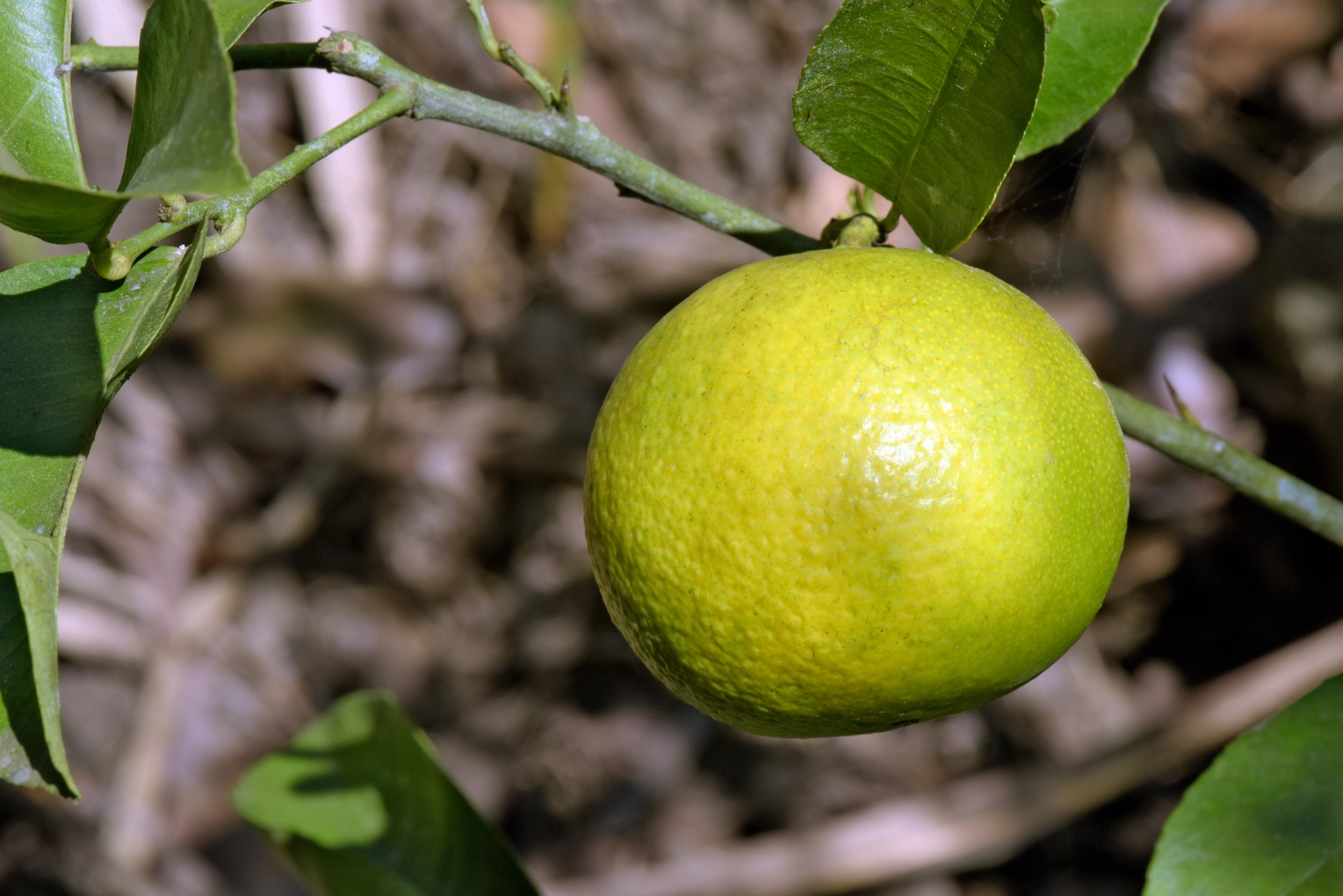Palestinian Sweet Lime
Citrus limettioides
Family: Rutaceae
The Palestinian lime is distinct from the limetta which is sometimes also called sweet lime, but derives from a citron/sour orange cross. The juice and zest of the sweet citrus can be used in cooking to add a tangy flavor to food and it’s especially utilized in Middle Eastern and Southeast Asian cuisine. The plant is also used medicine that helps relieve respiratory illnesses such as coughing, chest pressure, colds, and congestion.
Palestinian sweet limes are most likely a hybrid of Mexican limes (Citrus aurantifolia) and sweet lemon (Citrus limetta) or sweet citron (Citrus medica).
The trees grow 10-15’ tall, unless they are grown on dwarf rootstock. As with all citrus, this is an evergreen tree.
USES
Used for cooking, drinks, and medicine. In the Middle East, Latin America, and Asia fruits are used in marinades, sauces, desserts, as a garnish, and in numerous cocktails, fruit drinks, limeades, and other beverages. They’re also pickled, and cooked, and made into chutneys and relishes. They are often paired with meat and poultry, as their bright flavor helps to bring out and complement those richer flavors. The peel can also be grated or zested and used as a seasoning.
The key thing to remember when cooking with or using sweet limes in recipes is that unlike other citruses, such as ordinary limes, lemons, and even oranges, sweet limes contain very little acid, so they won’t impart that typical acidic bite that you might expect when adding a squeeze of citrus juice to a dish. What they do add is sweetness along with an intense lime aroma. The peel of sweet limes can also be used to make candied peel.
Because of their sweet flavor, sweet limes can be peeled and eaten out of hand as a snack.
GROWING
Palestinian limes should be planted in amended soil, in full sun. Plant appreciate mulching so long as you don’t bury the root flare of the tree. Best to plant this tree in a protected microclimate to help protect it from frost.
How often you water depends on your soil, and the method of watering that you use. In winter, once a month deeply is sufficient. As it warms up in the spring, go to every other week, again…deeply. In the height of summer you might water once a week to every two weeks, deeply. Pull back watering in September to harden off new growth.
Feed citrus trees with an organic, general purpose fertilizer once a month February through August. Or you can feed three times a year in February, May, and August.
Pruning isn’t necessary, in our opinion, except for grafted trees—prune any branches that emerge from below the graft scar, as these branches will not produce the fruits you aim to grow, but from the root stock.
Protect plants from frost in the winter.
You might notice a few species of butterfly on your trees, and their larvae. Citrus trees provide as larval hosts for a few species of swallowtail, especially the giant swallowtail (Papilio cresphontes)—the larvae look like bird poop, an excellent camouflage to protect themselves from predators.



